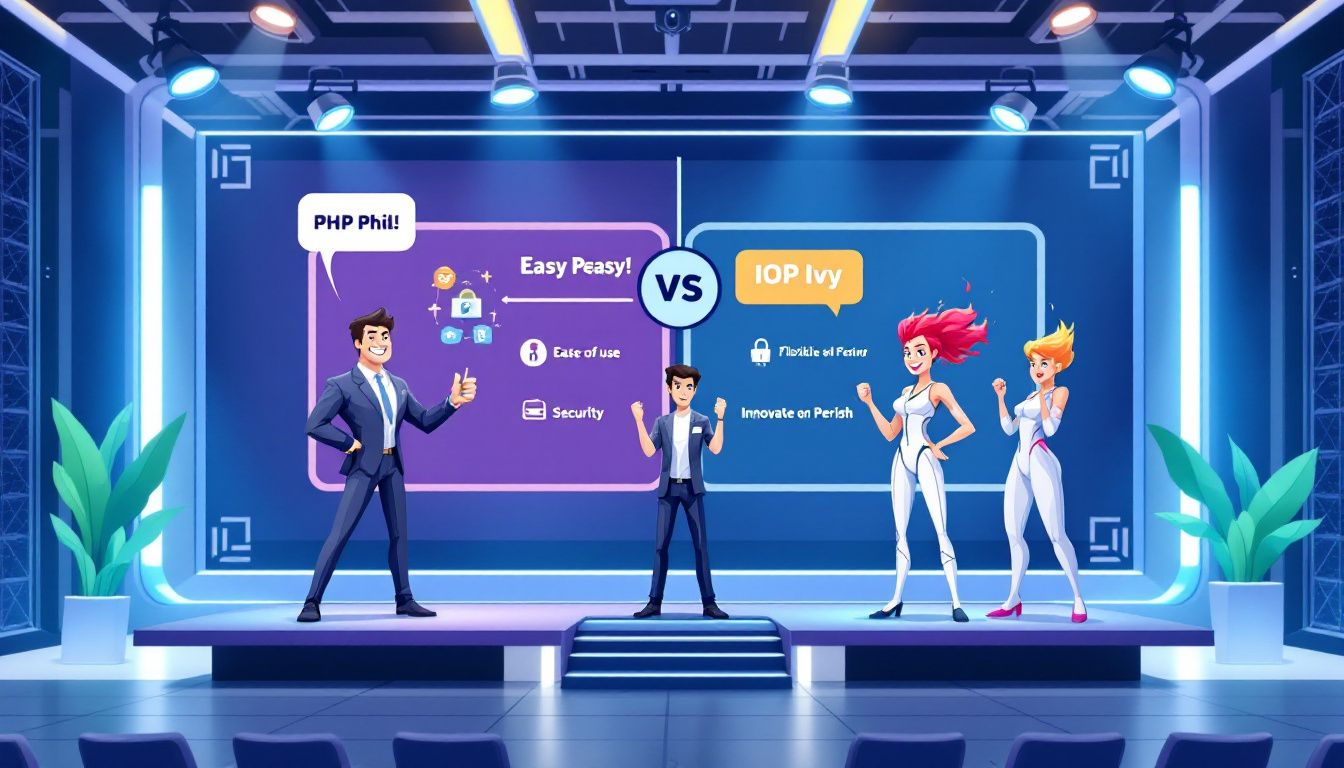IOP vs PHP: Choosing the Best Treatment Program for You
Deciding between an Intensive Outpatient Program (IOP) and a Partial Hospitalization Program (PHP) is vital for mental health or addiction treatment. This guide will compare IOP vs PHP, highlighting key factors to help you choose the right program.
Key Takeaways
Partial Hospitalization Programs (PHP) offer more intensive treatment with daily sessions lasting 4-6 hours, suitable for individuals needing significant support, while Intensive Outpatient Programs (IOP) provide flexible treatment with 2-4 hour sessions, allowing participants to manage daily responsibilities.
The choice between PHP and IOP should be based on the severity of the condition, available support systems, and personal financial commitments, ensuring that individuals select the program that best fits their needs.
Both PHP and IOP can effectively support recovery, with success rates influenced by matching treatment modalities to individual needs and maintaining engagement in therapy, along with a solid aftercare plan following program completion.
Understanding PHP and IOP Programs

Both Partial Hospitalization Programs (PHP) and Intensive Outpatient Programs (IOP) play a vital role in supporting individuals with severe mental health or addiction issues. PHP provides a more intensive level of care designed for those who need significant support but do not require 24-hour supervision. On the other hand, IOP offers structured treatment options while allowing individuals to live at home and maintain their daily responsibilities.
PHP and IOP are specifically designed to address mental health issues and substance use disorders through tailored therapeutic techniques. These programs are essential for maintaining a safe transition back into daily life and routines, ensuring that individuals receive the support they need to manage their conditions effectively.
Defining Partial Hospitalization Program (PHP)
A Partial Hospitalization Program (PHP) provides a more intensive level of treatment compared to Intensive Outpatient Programs (IOP). It is tailored to meet the individual needs and severity of conditions, offering therapy and medication services. PHP is designed for individuals with severe mental health or addiction issues who require significant support without needing 24-hour care.
PHP offers comprehensive and intensive care, ideal for individuals with co-occurring mental health conditions or those requiring frequent medical attention. Participants usually attend sessions five to seven days a week, with daily therapy lasting four to six hours, ensuring a stable routine that supports rapid progress.
Defining Intensive Outpatient Program (IOP)
An Intensive Outpatient Program (IOP) is a structured outpatient treatment option that supports individuals in recovery while allowing them to maintain daily responsibilities. IOP sessions are flexible, including individual therapy, group therapy, and skill-building sessions, with less medical oversight compared to PHP.
IOP suits those who have completed a PHP program or can manage their symptoms without continuous medical supervision. Participants typically attend sessions three to five days a week, allowing treatment to fit into their daily lives.
Key Differences Between PHP and IOP

Knowing the key differences between PHP and IOP helps in choosing the right program. PHP is more intensive, ideal for those needing structured support and significant medical supervision. Conversely, IOP offers less frequent oversight, suitable for individuals who can manage their symptoms with more flexibility.
Treatment modalities vary based on intensity. PHP offers continuous medical oversight and structured care, whereas IOP is more flexible, with therapy sessions scheduled three to five days a week for two to four hours each.
Treatment Intensity and Duration
PHP requires daily sessions lasting 4-6 hours, offering intensive support and monitoring. Participants typically engage in about five hours of therapy daily, five days a week, requiring attendance five to seven days per week for at least 25 hours.
IOP typically provides three to four hours of therapy per session, three to five days a week. The schedule is adaptable to the individual’s needs, generally totaling 12 to 15 hours of treatment weekly.
PHP sessions last 4-6 hours daily, while IOP sessions are 2-4 hours, indicating lower treatment intensity.
Level of Supervision and Support
PHP provides direct supervision with higher medical oversight, ensuring continuous support. This structured environment is crucial for those needing significant medical and therapeutic interventions.
IOP offers less frequent medical oversight, providing a structured yet flexible environment for those who can manage their symptoms independently. Despite less continuous supervision, IOP still offers a supportive environment for maintaining recovery.
Cost Considerations
PHP programs generally have higher expenses compared to IOP. The average monthly cost of PHP ranges from $7,000 to $20,000, while IOP costs between $3,000 and $10,000.
Insurance for PHP often requires higher coverage levels, whereas IOP is typically more affordable and may have better insurance support.
Daily Life in PHP vs IOP

Daily life in PHP and IOP programs is structured to support recovery, but experiences can vary. PHP offers a more intensive schedule, with multiple therapy sessions daily, supported by a multidisciplinary team, ensuring comprehensive care and monitoring.
IOP allows patients to maintain daily responsibilities and routines while receiving treatment. Its flexibility enables individuals to manage commitments like work or family while still participating in structured therapy sessions.
Typical Day in a PHP Program
A typical day in a PHP program is highly structured, offering a stable and supportive environment. Participants benefit from a multidisciplinary team, including psychiatrists, nurses, and therapists, ensuring comprehensive care. The day usually starts with group therapy, followed by individual counseling and various therapeutic activities.
Throughout the day, participants engage in various therapies like cognitive-behavioral therapy (CBT), dialectical behavior therapy (DBT), and family therapy. This intensive schedule helps address mental health or addiction issues comprehensively, promoting rapid progress and stability through mental health treatment programs.
Typical Day in an IOP Program
In an IOP, participants attend therapy sessions while maintaining their daily responsibilities. A typical day might include three to four hours of therapy, such as individual counseling, group therapy, and skill-building sessions. This flexible schedule allows individuals to manage responsibilities like work, school, or family while receiving treatment.
IOP encourages engagement in peer support groups and community recovery meetings, essential components of therapy. This approach helps individuals practice treatment skills in real-life situations, enhancing their recovery experience.
Treatment Modalities Used in PHP and IOP
Both PHP and IOP use various therapeutic practices tailored to assist clients in their recovery journey. These modalities address specific needs, helping individuals develop coping skills and manage symptoms.
Participants in IOP often engage in both group and individual therapy sessions throughout the week, focusing on skill-building and coping strategies. Evidence shows that IOPs offering a combination of therapy types yield better treatment results.
Individual Therapy Sessions
Individual therapy is crucial in both PHP and IOP, allowing for personalized treatment plans. In PHP, individuals often engage in various therapy modalities, including individual and group therapy sessions throughout the day.
Individual therapy in PHP and IOP focuses on helping patients address specific challenges, such as managing symptoms of mental health issues or addiction. This personalized approach ensures individuals receive the support needed to navigate their recovery journey effectively.
Group Therapy Sessions
Group therapy is a key component in both PHP and IOP, allowing participants to learn from shared experiences. Participants can share their struggles and successes, enhancing a sense of community and support.
Group therapy helps individuals identify negative emotions and thoughts, encouraging positive change in a collaborative environment. This fosters a supportive atmosphere vital for recovery.
Family Therapy Sessions
Family therapy sessions engage loved ones in the treatment process, fostering a supportive environment. Communication is encouraged, allowing family members to express concerns, share feelings, and collaborate on treatment goals.
Involving family members in therapy can lead to improved understanding, reduced conflict, and a stronger support system for the individual in recovery. This holistic approach ensures the environment supports their recovery journey.
Factors to Consider When Choosing Between PHP and IOP
Choosing between PHP and IOP involves considering several factors: the severity of the condition, available support system, and personal and financial commitment. Understanding these factors helps individuals make informed treatment decisions.
Consulting treatment specialists is recommended to choose the right program tailored to individual needs. Professionals can help assess unique needs when deciding between PHP and IOP.
Severity of Condition
Individuals with significant mental health or addiction challenges may require the intensive support of a PHP. Those needing more intensive care and who can dedicate significant time to recovery are generally better suited for PHP.
For those who can manage their symptoms independently and have a stable home environment, IOP can be a suitable choice. It is better for someone needing ongoing care but can manage a flexible schedule.
Available Support System
A supportive home environment is crucial for the effectiveness of IOP, allowing individuals to follow treatment plans independently. Effective programs often rely on strong external support systems, enhancing treatment outcomes.
Personal and Financial Commitment
Short-term addiction treatment programs typically last at least 30 days, while long-term treatment program can last 90 days or more.
Considering the time and financial commitments required for PHP vs IOP is crucial for making the right choice.
Transitioning from PHP to IOP
Transitioning from PHP to IOP allows for a gradual reduction in care intensity, helping individuals adapt to daily life. This step-down approach is crucial for continued recovery, ensuring the right level of care as they progress.
Transitioning from PHP to IOP indicates a patient’s progress and readiness for more independence. It provides a structured pathway that maintains support while allowing for greater personal responsibility.
Benefits of Gradual Transition
Transitioning from PHP to IOP provides a steadier reduction in treatment intensity, helping individuals adapt to lower levels of care. The flexible IOP schedule allows individuals to manage personal responsibilities while maintaining recovery progress.
Continued support through structured therapy sessions and community connections during transition enhances recovery success. Adjusting to a less intensive program like IOP can be facilitated by using acquired coping skills and self-management techniques.
Maintaining Progress Post-PHP
Relapse prevention is emphasized in IOP to prevent setbacks for those recovering from substance use disorders. Maintaining progress after transitioning from PHP to IOP is essential for long-term recovery.
Engaging in ongoing support groups and follow-up care is crucial for sustaining progress post-PHP. This includes participating in community recovery meetings and peer support groups, providing a sense of accountability and shared experience.
Success Rates and Outcomes
Both PHP and IOP programs effectively support recovery and achieve long-term sobriety. Studies show that individuals in PHP programs experience reduced substance use, improved psychological well-being, and increased chances of long-term recovery.
The success of PHP and IOP programs is influenced by matching the right treatment modality to the individual’s specific needs and maintaining consistent engagement in treatment. The intensive nature of PHP provides comprehensive treatment and focused support, which are crucial for effectiveness.
Measuring Success in PHP
Key indicators of success in PHP programs include improved social functioning and overall mental well-being. Measuring success in Partial Hospitalization Programs (PHP) involves evaluating key outcome indicators that reflect recovery progress.
PHP programs achieve a significant reduction in substance use among participants, and the cost-effectiveness of intensive care improves social functioning.
Measuring Success in IOP
IOP programs offer structured therapy sessions, education, and ongoing guidance. Successful IOP programs lead to reductions in substance use. They also improve social functioning and increase retention in treatment.
By focusing on skill-building and coping strategies, IOP helps participants handle their symptoms in daily life, enhancing their recovery experience.
Aftercare and Continued Support
Aftercare services are designed to provide ongoing support, tools, and resources that help individuals prevent relapse and promote mental well-being. Aftercare services enhance an individual’s ability to maintain recovery by providing ongoing support.
These services help individuals develop coping skills and resilience, ensuring that they have the necessary support to sustain their recovery.
Aftercare Following PHP
After completing a PHP program, individuals can access outpatient therapy, individual counseling, group therapy, and support group meetings as part of their aftercare. Continuing therapy sessions is essential for sustaining progress and addressing new challenges post-PHP.
Engagement in ongoing support groups and follow-up care is crucial for maintaining progress after transitioning from PHP to IOP. Organizations like Alcoholics Anonymous (AA) or Narcotics Anonymous (NA) provide structured support group meetings for those in aftercare.
Aftercare Following IOP
Aftercare services following IOP may involve therapy sessions and relapse prevention planning. Additionally, access to support groups may also be provided. Establishing a routine after PHP can provide a sense of structure that supports ongoing recovery.
Practicing self-care is vital for maintaining mental health after transitioning from IOP. Setting realistic goals helps provide direction and a sense of achievement during recovery.
Summary
In conclusion, choosing between PHP and IOP depends on various factors such as the severity of the condition, available support system, and personal and financial commitment. PHP offers more intensive care and supervision, making it suitable for individuals with severe mental health or addiction issues. IOP, on the other hand, provides a flexible approach that allows individuals to maintain their daily responsibilities while receiving treatment.
Understanding the differences between these programs, their treatment modalities, and the aftercare options available is crucial for making an informed decision. Both PHP and IOP play a vital role in the recovery journey, offering structured support and therapeutic interventions that promote long-term well-being. Remember, the right treatment program can make all the difference in achieving lasting recovery.
The main difference between PHP and IOP is the level of intensity and duration of treatment, with PHP offering daily sessions of 4-6 hours, while IOP provides a more flexible schedule with shorter sessions of 2-4 hours, three to five days a week.
PHP is suitable for individuals with severe mental health or addiction issues who require significant support and frequent medical attention in a structured environment. It offers an appropriate alternative for those not needing 24-hour care.
Yes, you can maintain your daily responsibilities while participating in Intensive Outpatient Programs (IOP), as these programs are structured to support recovery alongside your work, school, or family obligations.
PHP programs typically incur higher costs, ranging from $7,000 to $20,000 per month, compared to IOP programs which cost between $3,000 and $10,000 per month. This significant difference can impact insurance coverage requirements as well.
Aftercare services following PHP and IOP typically include outpatient therapy, individual counseling, group therapy, support group meetings, and relapse prevention planning, providing essential ongoing support to maintain recovery. Engaging in these services is crucial for long-term success.









